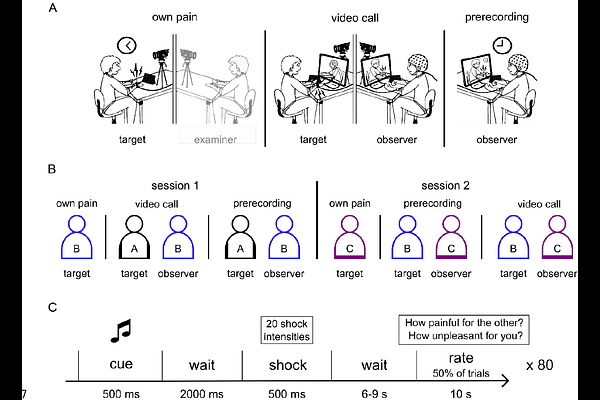Temporal presence does not affect behavioral and neurophysiological indices of pain empathy

Temporal presence does not affect behavioral and neurophysiological indices of pain empathy
Heimann, J.; Petereit, P.; Perry, A.; Kraemer, U. M.
AbstractThe impact of digitally mediated social interaction on understanding others and sharing their emotions has not been thoroughly investigated. We examined how live, video-mediated interaction as opposed to watching a prerecorded video, affects behavioral, neural, and physiological aspects of empathy for pain. Thirty-five observers watched targets undergoing painful electric stimulation in an electroencephalogram study. We hypothesized that reduced temporal presence would result in diminished behavioral and electrophysiological empathic responses. However, observer\'s behavioral empathic responses were not diminished with reduced temporal presence. On a neural level, mid-frontal theta was sensitive to the other\'s pain intensity, and we observed significant physiological coupling between participants. Mu suppression, on the other hand, was not modulated by pain intensity. Importantly, neural and physiological indices of empathy were independent of temporal presence. However, exploratory analyses indicated a latency effect of temporal presence on pain-related theta activity with an earlier theta increase in interactions with high temporal presence. The results suggest that the temporal presence of individuals may not be necessary for empathy towards another\'s pain. Future studies may investigate more naturalistic social interactions and include motivational aspects of empathy. We discuss implications of these findings for debates on social presence and on second-person neuroscience.